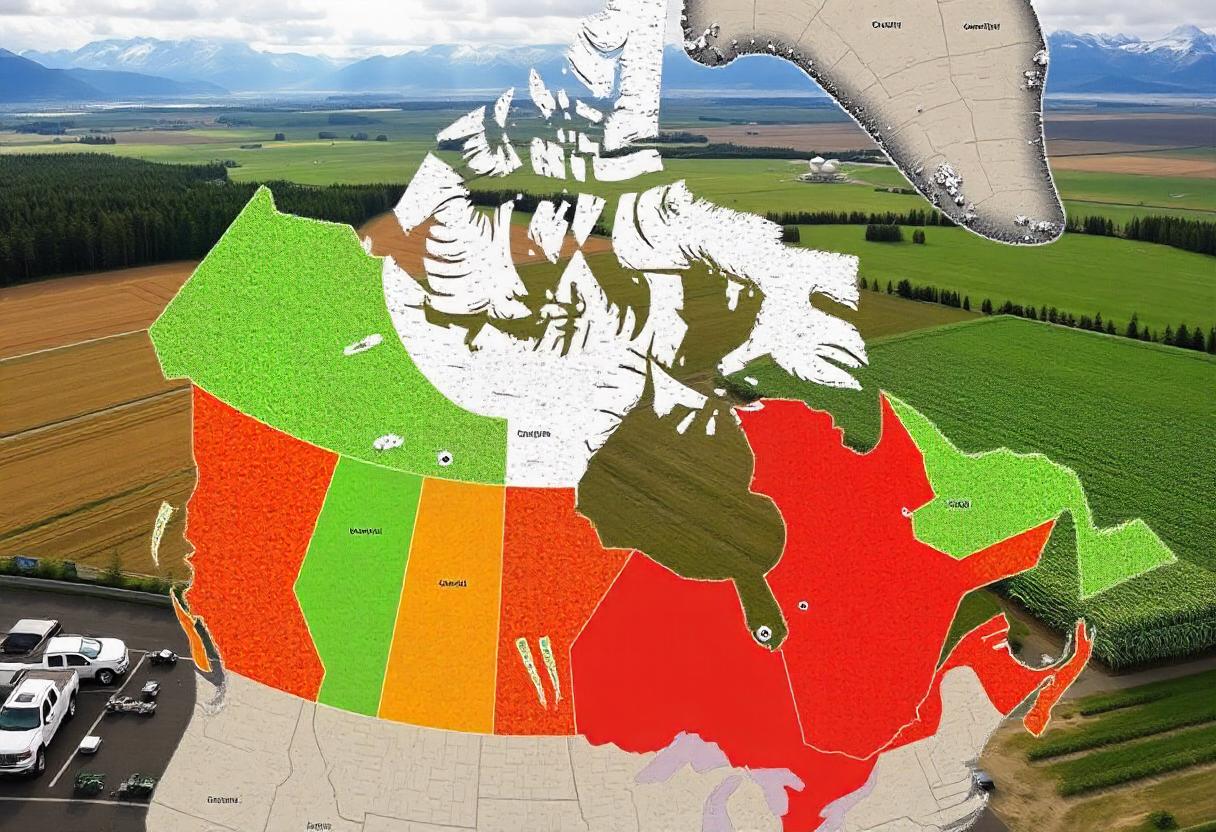
Canada’s vast landmass and diverse climates create a range of agricultural zones, each with its unique characteristics that affect crop cultivation. Agriculture zones in Canada are classified using the Plant Hardiness Zone system, which helps farmers and gardeners understand what crops and plants can thrive in specific regions based on temperature extremes, growing season length, and other climatic factors. These zones are critical for maximizing agricultural productivity, promoting sustainable practices, and guiding land-use planning.
Understanding the Canadian Plant Hardiness Zones
The Canadian Plant Hardiness Zone system is a classification that divides the country into different zones based on average minimum winter temperatures and other factors such as frost-free days and precipitation. The zones range from 0 to 9, with subzones (e.g., 4a, 4b) providing more specific temperature classifications.
- Zone 0: The coldest region, typically found in the far north, where very few crops can be cultivated due to extreme winters and short growing seasons.
- Zone 9: The warmest region, found in parts of southern British Columbia, where a wider variety of crops, including fruits like grapes and peaches, can be grown.
These zones are crucial for determining which plants and crops can withstand the local climatic conditions. Crops that may thrive in warmer zones may struggle to survive in colder areas due to frost and low temperatures.
Major Agricultural Zones in Canada
- Prairie Provinces (Zones 2-4): Alberta, Saskatchewan, and Manitoba form the heart of Canada’s grain production, particularly wheat, canola, and barley. These regions have long, warm summers but harsh winters. Farming here is supported by fertile soils and large-scale mechanized farming practices. While some areas are more suitable for livestock, others are heavily used for grain and oilseed production due to the favorable growing conditions.
- Ontario and Quebec (Zones 4-6): Central Canada, particularly southern Ontario and Quebec, enjoys a more temperate climate and longer growing seasons. These areas are crucial for the production of corn, soybeans, and fruit crops. The Niagara Peninsula, for instance, is in Zone 6, where vineyards and tender fruit crops like peaches and cherries thrive. Ontario is also a major dairy producer, benefiting from its fertile soils and moderate climate.
- British Columbia (Zones 5-9): British Columbia’s climate varies significantly, with southern coastal areas like Vancouver and the Okanagan Valley in Zone 8-9, offering some of the best conditions for fruit and vegetable farming. The region’s mild winters and long, warm summers allow the production of grapes for wine, tree fruits, and even certain types of nuts. On the other hand, northern BC experiences harsher winters and has shorter growing seasons, limiting the variety of crops that can be grown.
- Atlantic Canada (Zones 5-7): The Atlantic provinces, including Nova Scotia, New Brunswick, and Prince Edward Island, have moderate climates and are best known for potato farming, particularly in PEI. The region’s cool, moist conditions are ideal for root crops, berries, and dairy farming. Nova Scotia’s Annapolis Valley is also well-known for apple orchards and vineyards, taking advantage of the unique microclimate in Zone 6.
- Northern Canada (Zones 0-2): Northern Canada, including the Yukon, Northwest Territories, and Nunavut, presents extreme agricultural challenges due to its cold climate, permafrost, and short growing seasons. While traditional crop farming is limited, some experimental greenhouses and controlled-environment agriculture are being tested to grow vegetables and herbs in this remote area.
Factors Influencing Agriculture Zones in Canada
- Temperature: One of the primary factors affecting agriculture zones is temperature. Cold winters and short growing seasons in many parts of Canada limit the types of crops that can be grown, especially in northern regions.
- Precipitation: Adequate rainfall is necessary for successful crop growth, and different zones receive varying levels of precipitation. The Pacific coast benefits from high rainfall, while parts of the Prairie provinces are more arid and rely on irrigation to support farming.
- Soil Quality: The quality of soil in different agricultural zones also plays a key role. Fertile prairie soils, known for their organic matter content, support large-scale grain farming, while sandy soils in other regions may require additional inputs to support agriculture.
- Frost-Free Days: The number of frost-free days directly impacts the growing season. Southern areas of Canada, such as southern Ontario and British Columbia, have longer growing seasons, making them ideal for crops that need extended periods of warmth to mature.
Challenges and Opportunities in Canadian Agriculture Zones
Canadian farmers face numerous challenges, including climate change, which is altering growing conditions and shifting agriculture zones over time. Warmer temperatures in the north may eventually allow for expanded crop production, but this also comes with risks such as increased droughts or unpredictable weather patterns. On the other hand, advancements in technology, such as the development of hardier crop varieties and the use of precision agriculture, offer opportunities to mitigate these challenges and optimize farming practices for each zone.